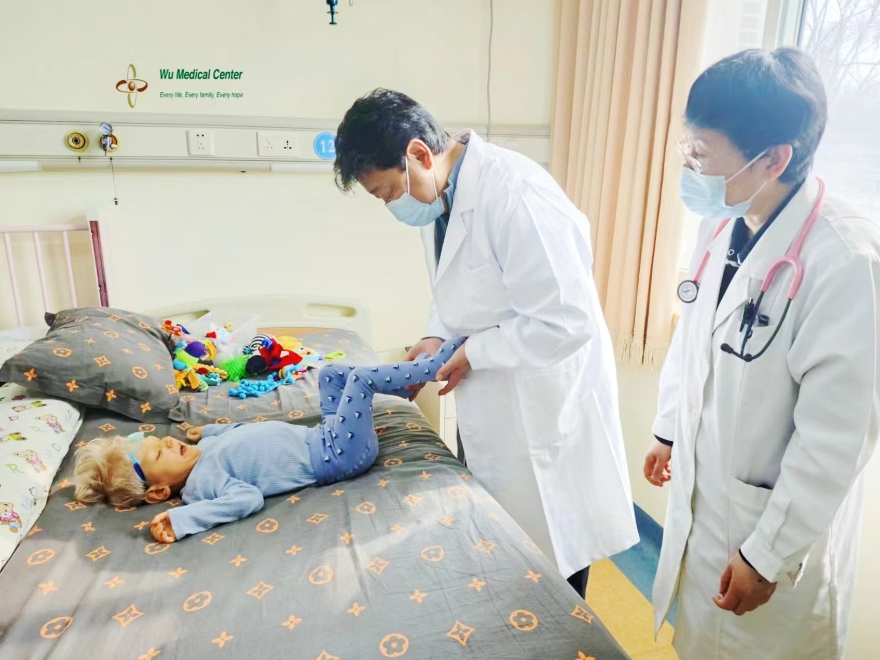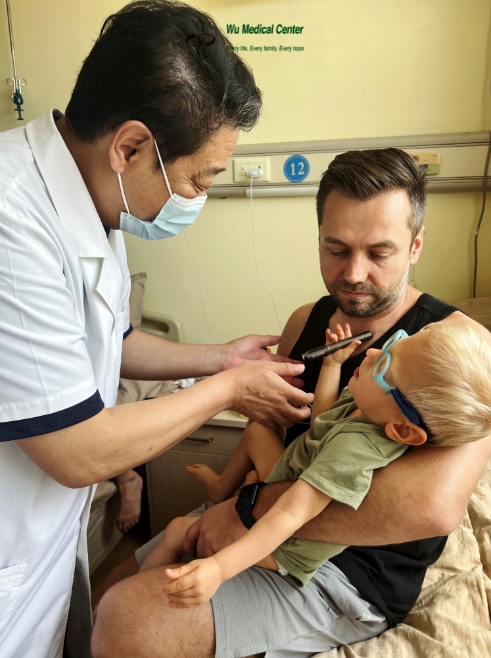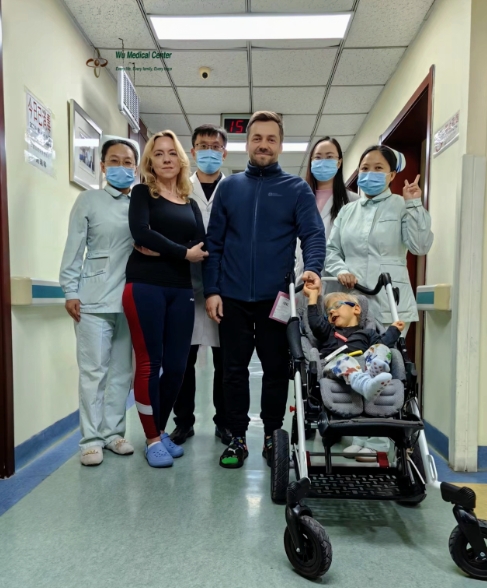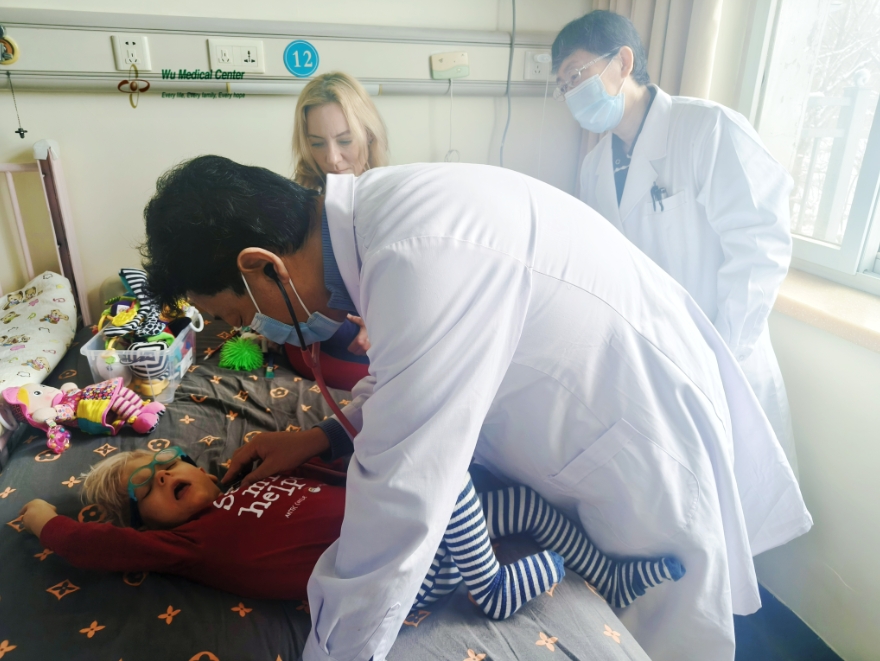Liam Świderski-Brain injury-(Poland)
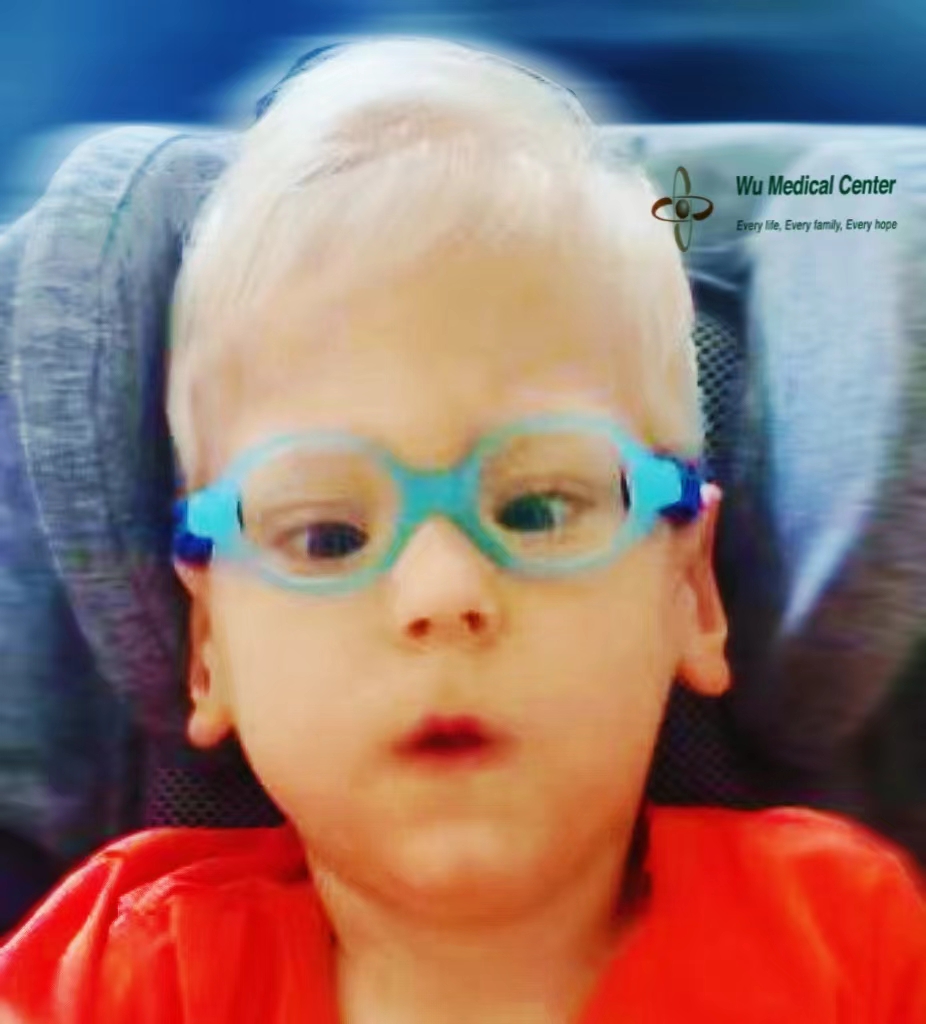 Patient Name: Liam Świderski
Patient Name: Liam Świderski
Gender: Male
Age: 3 years old
Nationality: Poland
Diagnosis: Brain Injury
Condition at Admission:
The patient was born as a premature baby. He suffered from severe brain injury due to intracranial hemorrhage after birth. He has delayed growth and development, severe motor, cognitive, and visual impairment functions. He does not have seizures.
Physical Examination at Admission:
The patient's blood pressure was 76/55 mmHg, with a pulse rate of 120-130 beats per minute. His height was 85.5cm, and his weight was 9kg. There were no skin or mucous membrane abnormalities or bruises, his throat was normal without any inflammation, his thorax was symmetrical with normal breath sounds without dry or wet rales. The patient's heart rate was 120-130 beats per minute, with a noticeable arrhythmia. There were no significant murmurs heard on auscultation of the heart valves. His abdomen was soft, without any tenderness or rebound tenderness, his liver and spleen were not palpable. There were no signs of edema in his lower limbs.
Neurological Examination:
The patient's consciousness is clear, although his responses to the surrounding environment (sounds and light) are delayed and weak. He is easily irritable with a low-pitched crying sound. His chewing and swallowing abilities are poor, with a slow eating speed. Both pupils are equal in size and round, with a diameter of about 3mm, and respond quickly to light. The patient's tongue muscle movement is sluggish, with weak chewing and swallowing abilities. His muscle strength in the limbs is 4th grade, with his right hand able to grip while his left hand cannot. The patient's muscle tone in the limbs is high with flexion often observed in the lower limbs. He is unable to roll over or maintain sitting positions, or crawl. The abdominal reflexes are present in both limbs. His upper limbs have normal muscle tone and strength. His sucking reflex, grasp reflex, and feeding reflex are positive; Hoffmann's sign is negative, but his bilateral Babinski sign is positive. There are no signs of meningismus.
Treatment Process:
After the patient's admission diagnosis of brain injury was confirmed, he received treatment with nerve stem cells + mesenchymal stem cells + CAST to increase the number of nerve cells in the brain and spinal cord, repair nerve damage, improve blood circulation in the brain and spinal cord, regulate the immune system, provide nutrients to the nerves, and undergo rehabilitation therapy.
Post-treatment:
The patient's condition has gradually improved, with an increase in his mental control and decreased crying sessions. His responses have become faster, his eyes can now focus for longer periods of time, his attention span has increased, his voice has become louder, his chewing and swallowing abilities have improved significantly, his eating speed has increased, his height has increased to 91 cm, and his weight has increased to 12 kg. The muscle strength in his limbs has increased to around 5th grade with decreased muscle tone in the limbs to a normal range. Both his hands can now grasp toys, and there is a noticeable improvement in spasticity in his lower limbs. His heart and lung function has improved with a heart rate of 80-110 beats per minute and a noticeable decrease in arrhythmia. His energy and physical ability have significantly increased.
